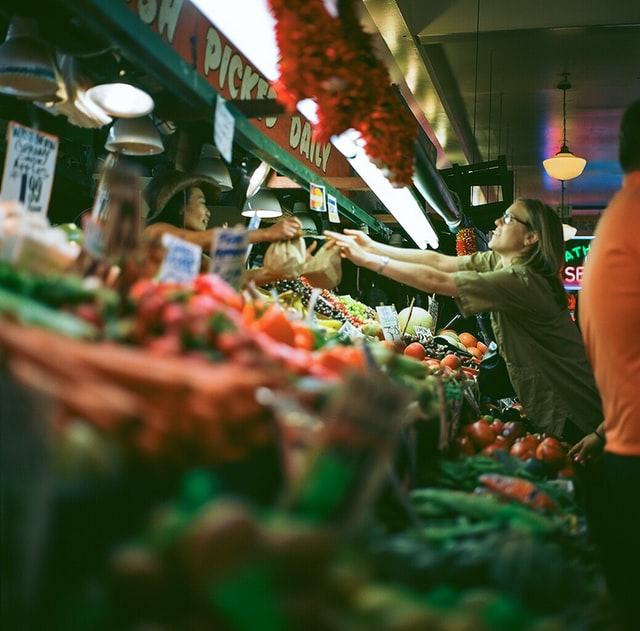In 2021 the world saw the first recovery signs from Covid-19, but we are not there yet. At the same time, the UN declared 2021 the International year of Creative Economy for Sustainable Development. This nomination could not come at a better time as the pandemic has paralyzed the cultural and creative industries (CCI), with creatives and professionals in the creative sector suffering from severe consequences.
It may be true that the CCI amount only for about 3% of global DGP, but its growth has been more than remarkable in the years preceding the pandemic. Creative entrepreneurship could be the key to the creative industry’s recovery to its former glory. This article will discuss creative entrepreneurship and explore the benefits it can bring to creatives in the aftermath of the pandemic.
A short history of entrepreneurship

Entrepreneurship today can take many forms, like social entrepreneurship or creative entrepreneurship. But if you search deep down at entrepreneurship’s core, you will find an individual – the entrepreneur.
An entrepreneur is essentially a person who takes a risk hoping to gain a profit. With that definition in mind, we trace the first entrepreneurs thousands of years back in history. They were the travelling traders and merchants moving from one place to another in pursuit of opportunities for profit.
Since then, entrepreneurship has evolved drastically with the influence of various important figures. What began with bartering goods at the local level has now grown into a complex and interconnected trade system. It has a global capacity and it caters to the needs of the masses.
What is creative entrepreneurship?
There is too much talk about creative entrepreneurship, but what is it really?
According to art historian Paul DiMaggio, the beginning of cultural entrepreneurship can be traced back to 19th century Boston, Massachusetts. Then, Boston’s elite social class built organizational forms to isolate and then separate culture into high and popular. Essentially, they coupled culture with capital giving birth to the Boston’s Museum of Fine Arts and the Symphony Hall, among others.
Since then, creative entrepreneurship has derived from its initial meaning and has become broader and more resourceful. Speaking of creative entrepreneurship nowadays, we mean two things. On the one hand, we recognize it as the economic capacity of the creative industries. Alternatively, we see creativity as going hand in hand with entrepreneurship. Creativity enhances the way we lead, manage, or innovate in a business.
While traditional entrepreneurship cares more about material gains, creative entrepreneurship acts primarily as a vehicle for social change instead of just focusing on profit. Creative entrepreneurship encompasses all businesses with an inclination towards arts or cultural heritage.
Why the world needs more cultural entrepreneurs
Cultural entrepreneurs understand the importance of culture and have created a platform to celebrate it.
Culture is the beliefs and values passing from generation to generation relatively unchanged. It creates identities and a sense of belongingness among individuals. In a globalized and fast-paced environment where identities are weakened and cultural roots are lost, cultural entrepreneurship can be a beacon of hope to remind us who we are.
This is partly why the cultural and creative industry had seen tremendous growth before the pandemic. Cultural products like films, theatre and literature, or cultural activities such as sports, live performances, and food festivals contribute significantly to the growth of the local and national economies.
Can creative entrepreneurship revive the cultural and creative industry?

That’s the central question behind CUBE Erasmus+ project that iED participates as a partner.
Covid-19 had a severe impact on the lives of creatives and workers in the creative industry as it was one of the sectors affected the most. CUBE project wants to reverse this sudden social inequality by providing artists with learning opportunities to increase their entrepreneurial skills. Considering the difficulties of the time, this upskilling initiative will be digital so that all artists from all over Europe can benefit.
Additionally, CUBE not only will teach the essentials of entrepreneurial thinking but also plans to create a cultural incubator mechanism. This incubator will provide additional guidance to artists to make their entrepreneurial idea a reality. Essentially, the project will build a new generation of creative entrepreneurs.
With all the difficulties artists encountered in the past two years in the creative sector, now is the perfect time for artists to grow their art and ideas into something bigger. By doing so, their cultural impact will be more significant and will build something that can monetize.
Conclusion
The cultural and creative industry had seen unprecedented growth in the years leading to the pandemic. As a result, many artists and creative professionals were surprised by this unprecedented crisis that left many without employment. Culture is integral in modern society. It reminds our heritage, contributes to the local or national economy, and brings social reforms.
Creative entrepreneurship, which creates business or self-employment in the creative industries, can provide the significant boost that the sector needs to recover. The CUBE project is a European funded initiative that will help European artists get back on their feet stronger than ever by supporting them in becoming cultural entrepreneurs.
Follow the project updates of CUBE to see the impact of creative entrepreneurship in the EU cultural and creative industry.

